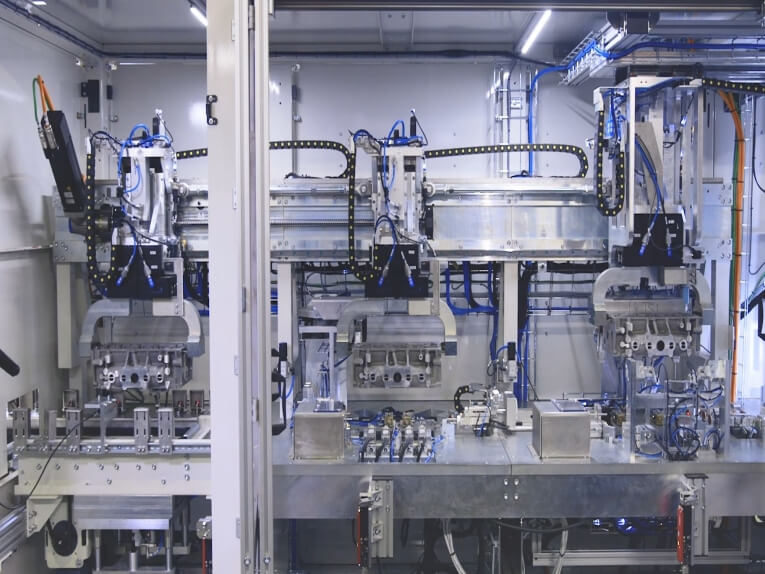When someone says “motor,” the image that comes to mind for most people is usually something that spins. However, motors can take different forms, such as linear motors.
The linear motor was invented in the late 1940s by Dr. Eric Laithwaite of Manchester University. They started off as low acceleration devices, but in modern days, the technology has become capable of extremely high speeds in automation. The technology also became the basis for mag-lev transportation.
Construction
Unlike rotary motors, linear motors do not feature a rotor spinning within a stator, but instead have a carriage that moves back and forth along a track.
The construction of a linear motor is the same as a rotary three-phase motor but opened up and flattened out. Configuring a servo drive for a linear motor is identical to configuring a drive for a rotary motor.
A linear motor is made up of permanent magnets alternating in polarity and a moving carriage with three phases of coils. The direction of current through these coils magnetizes the phases north or south, which pulls or pushes it along the motor track respectively.
Applications Compared to Linear Actuators
Linear motors are not the only way to achieve linear motion control. In many cases, the same motion can be achieved using a rotary motor and a ball-screw or a linear actuator. Ball-screws and linear actuators are typically much less expensive than linear motors, so some might ask:
Why use a linear motor instead of a ball screw or linear actuator?
Short answer: Linear motors are for fast motion, accleration and very high accuracy. Ball screws and linear actuators are for high force and lower cost.
Long answer: As we have seen, a linear motor is constructed the same as a brushless rotary motor, but flattened out. When used in an application the load is attached to the carriage that moves along the permanent magnets. Since there is no gearing this is a direct-drive system giving it incredible responsiveness and speed with no backlash. The disadvantage is the force is limited by the strength of the magnetic forces and the amount of power that can be carried by the motor coils.
On the other hand, ball screws and linear actuators use rotary motors connected to a mechanical gearing system that translates rotary motion into linear motion. Since gearing is involved, the amount of force available is much higher than the force available from a linear motor. The shorter the lead on the ball screw, the more force can be generated, but there’s a sacrifice in speed. There will also be backlash to contend with in many of these types of systems which reduces accuracy.
Linear motors are used in direct drive applications where the speed and accuracy requirements are more than a rotary motor and mechanical actuator can provide, such as industrial 3D printer, a speed and acceleration probably not possible with a ball screw or linear actuator.
Post time: Jul-31-2023








